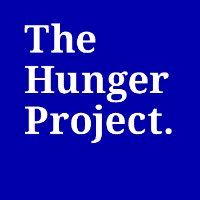Poverty
“Overcoming poverty is not a gesture of charity. It is an act of justice. It is the protection of a fundamental human right, the right to dignity and a decent life.” — Nelson Mandela
The UN’s first Sustainable Development Goals is to “End poverty in all its forms everywhere” to address discrepancies between access to food and other resources. Hundreds of millions of people living in developing countries survive on $1.90 a day or less. Poverty, food prices and hunger are inextricably linked. Poverty causes hunger. Not every person living in poverty faces chronic hunger, but almost all people facing chronic hunger are also living in poverty.
Millions live with hunger and malnourishment because they simply cannot afford to buy enough food, cannot afford nutritious foods or cannot afford the farming supplies they need to grow enough good food of their own. Hunger can be viewed as a dimension of extreme poverty. It is often called the most severe and critical manifestation of poverty.
Rural households are the most heavily burdened by the consequences of poverty and hunger. In addition to causing hunger, poverty limits a rural community’s ability to invest in its own development. Often, rural girls living in poverty will be kept out of school to save money. This contributes to the disparity in the education of rural and urban girls. Studies have shown that lack of general education leads to higher adolescent birth rates; births that in turn over-burden an already economically strained community, perpetuating a cycle of gender inequality, poverty and hunger.
We believe in a holistic approach to hunger, which means addressing its root causes – including poverty. In our Program Countries, we build the capacity of women and men to move beyond poverty, training them in the skills, methods, knowledge and leadership needed to take self-reliant actions so they can meet their own basic needs, improve their communities and build better futures for themselves and their children.
WHAT WE DO
- Boost women’s economic impact. At our epicenters across Africa, thousands of women food farmers are increasing their incomes through training and credit, and strengthening their clout in the marketplace.
- Help implement Microfinance Programs. The ultimate objective of our Microfinance Program is to gain government recognition and operate as a licensed saving and credit cooperative (SACCO) or Rural Bank. Owned entirely by community members, the Rural Bank then provides the entire epicenter community with sustainable access to savings and loan facilities.
- Introduce income-generating activities. Trained partners implement income-generating activities, often joining together in self-help groups: from sewing projects in Mexico to cow-fattening projects in Bangladesh. Thousands of our partners also participate in workshops throughout Africa to learn new and innovative methods of increasing household income.
- Facilitate self-reliant food banks. In Africa, our goal is to empower people to create, stock and manage their own food banks at the community level, which helps stabilize day-to-day food prices in local markets during times of crisis.
- Provide agricultural support. Through agricultural training and increased access to farming inputs, small farmers in communities are able to increase their crop yields, enabling them to grow enough food to feed their families, diversify their crop yields and even sell surpluses at market.
Related News
Make change happen. Invest in people.
Mailing address
The Hunger Project
110 West 30th Street, 6th Floor
New York, NY 10001
Get connected
Join the conversation on social, and stay connected with the latest from our partners around the world.
Stay informed
Subscribe to our newsletter to receive updates of latest news and events.
© The Hunger Project | Website by The Good Alliance






